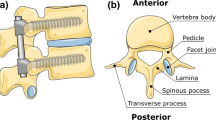Abstract
An aliphatic segmented polyurethane with soft to hard segment ratio 3 was synthesised using hexamethylene diisocyanate, polypropylene glycol 400 and 1,4-butane diol.A stainless steel cage implant system has been used to study thein vivo biocompatibility of this polyurethane. United States Pharmacopoeia negative control polyethylene was used for the comparison. Three cages, one with polyurethane another with United States Pharmacopoeia polyethylene and the third control empty cage were implanted subcutaneously in the dorsal aspect of rabbits. The inflammatory exudate surrounding the material was aspirated from the cages on 4, 7, 14 and 21 days after implantation. The total protein content in the exudate aspirated from all the 3 cages was significantly higher at 7 days than in the reported normal rabbit serum of New Zealand white rabbit but equal to that of our rabbit colony. The albumin concentration was lower in the initial period but increased at 21 days post implantation period in all the cages. Concentration of α1, α2 and γ-globulin also decreased in all cages at 21 days. Neutrophils were predominant in all the exudates aspirated from polyurethane, polyethylene and empty control cages during whole implantation period. This is attributed to the profound effect of the cages on the surrounding vasculature. Macrophage was found to be seen during acute phase of inflammation due to the migration of macrophage along with neutrophil towards the inflammatory lesion. The percentage of neutrophils showed a faster decline in the cage containing polyethylene at 21 days. The extra cellular alkaline phosphatase activity, though higher in exudate from cages containing polyurethane at 14 days post implantation, was same in all 3 cages at 21 days. Leucine amino peptidase activity was found to be decreased at 21 days of post implantation time though the empty control cage exhibited an increase at 14 days post implantation. The inflammatory response at 21 days was similar in polyurethane and the control polyethylene
Similar content being viewed by others
Abbreviations
- HDI:
-
Hexamethylene diisocyanate
- PPG:
-
polypropylene glycol
- BD:
-
1, 4-butane diol
- US P:
-
United States Pharmacopoeia
References
Allison, A. C, Harington, J. S. and Birbeck, M. (1966)J. Exp. Med.,124, 141.
Anderson, J. M. and Miller, K. M. (1984)Biomaterials. 5, 5.
Baier, R. E. and Dutton, R. C. (1969)J. Biomed. Mater. Res.,3, 191.
Imai, Y., Watanable, A. and Masuhara, E. (1979)Trans. Am. Soc. Artif. Intern. Organs. 25, 299.
Issekutz, A. C, Movat, K. W. and Movat, A. Z. (1980)Clin. Exp. Immunol.,41, 512.
Issekutz, A. C. and Movat, H. Z. (1980)Lab. Invest.,42, 310.
Issekutz, T. B., Issekutz, A. C. and Movat, H. Z. (1981)Am. J. Pathol.,103, 47
Kozma. C, Macklin, W., Cummins. L. M. and Maver. R. (1974) inThe biology of the laboratory rabbit (eds S. A. Weisbroth, R. F.. Flat and A. C. Kraus) (New York: Academic Press) p. 50.
Kozma. C. K., Pelas, A. and Salvador. R. A. (1967)J. Am. Vet. Med. Assoc,151, 865.
Marchant. R.. Hiltner, A., Hamlin, C, Rabinovitch, A., Slobodkin, R. and Anderson, J. M. (1983)J. Biomed. Mater. Res.,17 301.
Marchant. R., Miller, K. M. and Anderson, J. M. (1984)J. Biomed. Mater. Res.,18, 1169.
Matlaga, B. F. and Salthouse, T. N. (1983)J. Biomed. Mater. Res.,17, 185.
McNamara, A. and Williams, D. F. (1981)Biomaterials,2, 33.
Nathan, C. F. (1987)J. Clin. Invest.,79, 319.
Neuman. A. W., Absolom, D R., Zingg, W., Van Oss, C. J. and Francis, D. W. (1983) inBiocompatible polymers. metals and composites (ed. M. Sycher) (Lancaster: Technomic Pub.) p. 53.
Reinhold. J. G. (1953) inStandard Methods Clin. Chem. (ed. M. Reiner) (New York: Academic Press) vol. 1.p. 38.
Spilczewski, K. L., Anderson, J. M., Schaap. R. N. and Solomon, D. D. (1988)Biomaterials,9, 253.
Varley, H. (1967)Practical clinical biochemistry (London: William Heinemann Medical Books Ltd.) p. 455.
Author information
Authors and Affiliations
Rights and permissions
About this article
Cite this article
Jayabalan, M., Rathinam, K., Kumary, T.V. et al. In vivo biocompatibility of aliphatic segmented polyurethane in rabbit. J Biosci 14, 289–299 (1989). https://doi.org/10.1007/BF02716690
Received:
Revised:
Issue Date:
DOI: https://doi.org/10.1007/BF02716690




